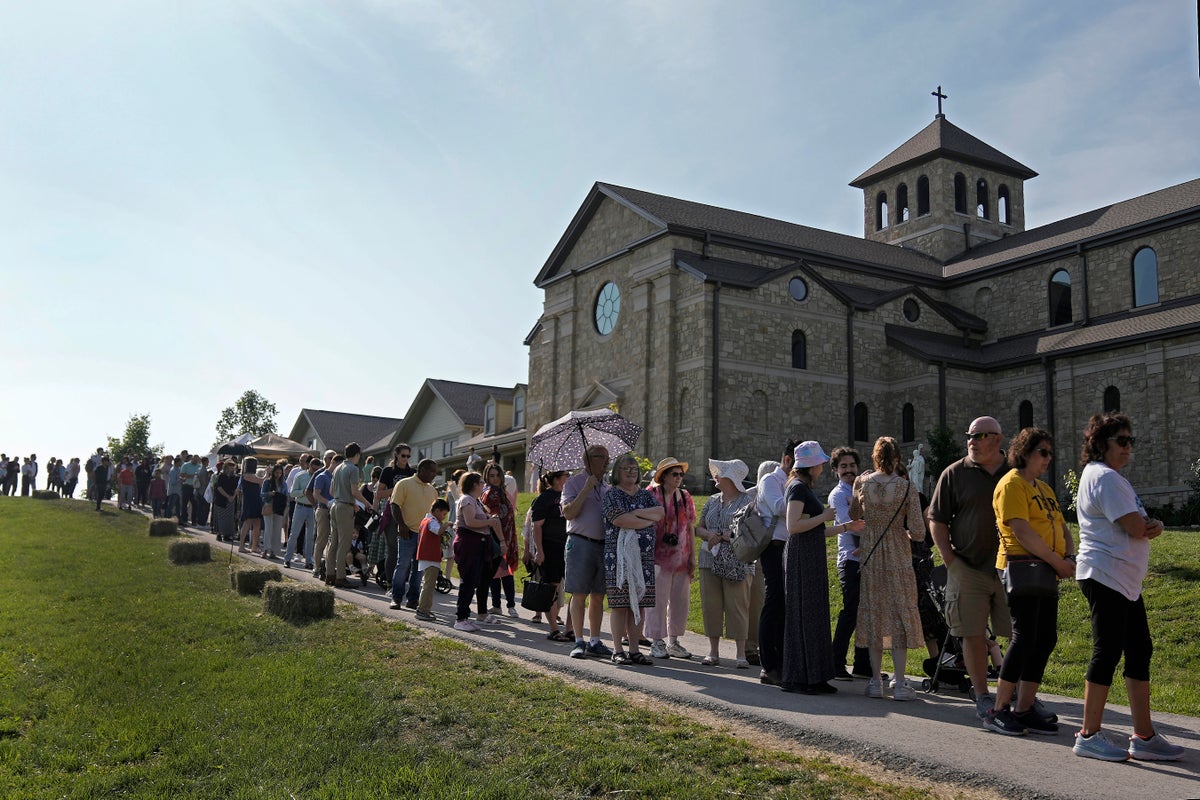
The Benedictines of Mary, Queen of Apostles, had just finished digging up a body when they made a startling discovery.
Though removing a body from its final resting place is typically seen as taboo — even among the secular — the sisters of the Queen of Apostles had holy intentions; they wanted to move the remains of their founder, Sister Wilhelmina Lancaster, who died in 2019, into their new monastery in Gower, Missouri.
When they opened the sister's casket, they found something extraordinary; Lancaster showed few, if any, signs of decomposition. She had not been embalmed and was buried in a simple wooden casket.
While perhaps strange in any other context, to the Catholic faithful consider such a discovery is no less than an act of God. The church even has a term for it — incorruptible.
Though the nuns initially had no intention of publicising the discovery, a leaked email shared news of the discovery with the public, prompting the church to use the Memorial Day weekend to offer the public a chance to view their incorruptible founder before she is permanently interred in a glass case at the monastery.
The nuns opened the doors to the faithful, and they came in droves.
Over the weekend, lines stretched outside Mary Queen of Apostles Monastery in the rural Missouri town, with Catholics from across the region driving in to see the miracle with their own eyes. The turnout was so significant that local police had to establish a command post at the site. Video from the monastery showed men in orange vests directing traffic to ensure the sheer number of cars arriving did not cause chaos at the church.
More than 1,000 people arrived each day the nun's body was available for viewing, prompting the church to advise visitors to bring umbrellas and folding chairs to weather the wait.
Lori Rosebrough, of Overland Park, Kansas, drove across state lines to visit what she believes is "the hand of God at work" on a potential saint.
"Not many people can say that they touched and prayed over the body of a saint," she told USA Today. "I believe that the thousands of us that made the trip to Gower, Missouri, this week can now say that we have."
Those who visited the site were allowed to view and pray over the nun's body, to touch her habit, and even to take dirt from her original grave.

While the faithful flock to see the sister's remains, the Diocese of Kansas City-St Joseph is preparing to investigate exactly what is going on with the exhumed corpse.
The Diocese said it is working to "establish a thorough process for understanding the nature of the condition of Sister Wilhelmina’s remains," noting that they have understandably "generated widespread interest and raised important questions."
"At the same time, it is important to protect the integrity of the moral remains of Sister Wilhelmina to allow for a thorough investigation," the diocese said in a statement.
The Diocese's Bishop, James Johnston, noted that "incorruptibility has been verified in the past, but it is very rare."
"Verification" is a system within the Catholic church of determining whether or not a miracle has occurred. It is often done so in connection with the process of determining whether a dead Catholic is eligible for sainthood.
Mary Elizabeth Lancaster, who later became Wilhelmina after taking her vows, showed her intent to become a nun at age 13. Despite her youth, she wrote to the Oblate Sisters of Providence in Baltimore stating her intentions to join the order. They advised her to wait until she was a little older to take her vows.
Nonetheless, she eventually joined the sisterhood and, at age 70, founded the Queen Mary of the Apostles order. The group has gained some notoriety thanks to the albums it has released of Gregorian chants and Catholic hymns.
Some visitors, like Ms Rosebrough, have questioned if the discovery will make the nun eligible for sainthood; however that is a question for 2024, as dead Catholics cannot be considered for sainthood until five years after their deaths.
Despite the fervor to see the potential saint, there are those who see the discovery as more mundane.
Rebecca George, an anthropology instructor at Western Carolina University in North Carolina, told ABC7 that the discovery is not as unique as some might believe.
She said that "mummification" of non-embalmed bodies was relatively common at the university's facility, and noted that bodies could remain preserved for many years. She said that clothing — like the sister's habit — also helped to preserve bodies after burial.
"Typically, when we bury people, we don't exhume them. We don't get to look at them a couple years out," Ms George told ABC7. "With 100 years, there might be nothing left. But when you've got just a few years out, this is not unexpected."







